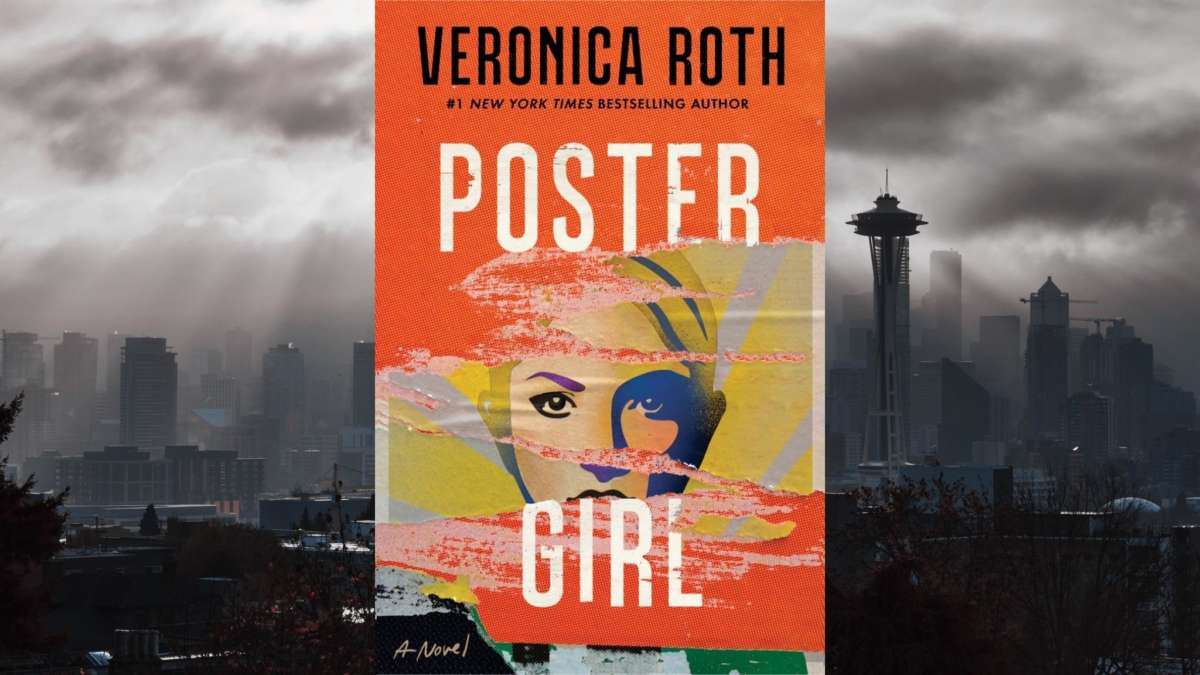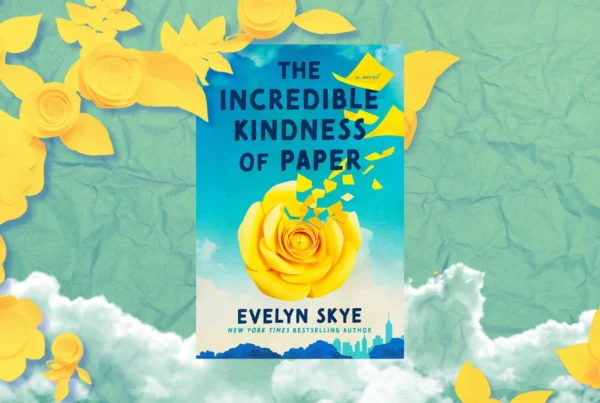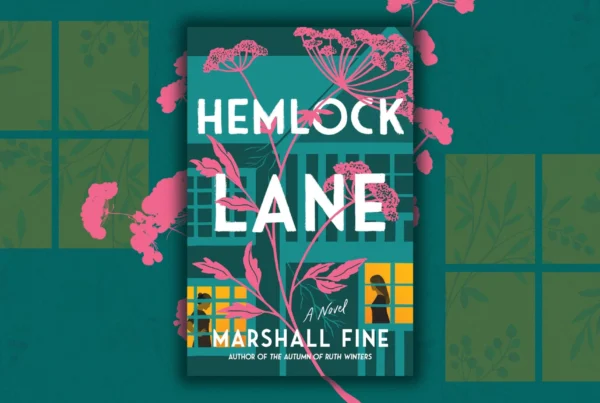Number one bestselling author, Veronica Roth, returns with another haunting dystopian tale in Poster Girl (William Morrow). Set in a future society shaken by governmental upheaval, protagonist Sonya Kantor is imprisoned in the Aperture, a facility for political dissenters of the former regime, the Delegation. Her crime is that over a decade ago, she was the face of the Delegation. Depicted as their teenage “poster girl” on propaganda posters, her likeness was plastered everywhere in the land.
Sonya’s family was killed in the uprising, and now she lives a sad, lonely existence inside the Aperture, subsisting on performing odd jobs for the other inmates. Yet, Sonya has a face no one can forget and a past she cannot escape.
THE QUEST FOR A MISSING GIRL
In captivity, Sonya experiences soul-crushing deprivation, and she is resigned to living out her dreary life inside the Aperture. Then one day, Alexander, an old friend who represents the new regime, the Triumvirate, presents her with a proposition. He offers her freedom. To earn her liberty, she must work for the Triumvirate and locate a missing child.
Sonya questions the Triumvirate’s true intentions in sending her on this fool’s errand to find a girl named Grace Ward. The Triumvirate hasn’t been able to locate Grace, and Sonya doubts her ability to succeed in the task. However, she cannot resist the challenge, and embarks on a dangerous journey, full of twists and turns. They give her a daily pass to leave the Aperture, and along the way Sonya past and present collide as she uncovers dark political and family secrets.
AN UNSETTLING FUTURISTIC SOCIETY
Under the regime of the Delegation, they had issued each person an ocular implant, the Insight, which fed them information, music, and entertainment. The Insight also monitored the citizens, enforcing a rigid moral code by rewarding and punishing people based upon their activities. In the Triumvirate, everyone except the prisoners, has had their Insight dismantled, and Sonya’s implant draws even more attention to her as she navigates a post-Delegation society to solve the puzzle of Grace’s disappearance.
Along the way, Sonya encounters notorious criminals, resistance fighters, former friends, and henchmen of the old and new regimes who threaten her life. While each presents a stumbling block to attaining her goal, like chess pieces, they move her closer to capturing the King. But whom can she trust?
Once again, Roth embeds the reader in a future society in ruin; this time it is Seattle. Sonya quickly discovers that the Triumvirate’s widespread corruptions surpass those of the Delegation, and they are feeding their citizens lies, which threaten the freedoms they fought to achieve during the war. Poster Girl reminded me of the Who’s anthem, “We Get Fooled Again,” where the new boss is the same as the old boss.
DYSTOPIAN FICTION WITH A POWERFUL LEAD
In Poster Girl, Roth examines the themes of betrayal, familial relationships, the impact of technology on our daily lives, and the government’s control over our existence, especially the right to procreate and personal choice. Sonya was raised in a world of the one child rule, and interestingly, she and Grace are both second, perhaps illegal, children. There is more to Sonya’s own heritage than she has been told by her parents, and was too young to observe. Will her discoveries shattered her long-held beliefs or reinforce them?
Roth has created Sonya Kantor as a reluctant yet strong hero, and readers will root for her as she encounters the obstacles to her freedom. Her awakening is often profound, and one that will keep the reader on the edge of their seat. In our present political climate, Poster Girl will resonate with readers long after the final page. Bravo, Veronica Roth, for another sharp, mesmerizing tale!
A QUARTET OF QUESTIONS FOR VERONICA ROTH
Can you tell us what inspired you to create your protagonist, Sonya Kantor?
She came together when I thought about her as a guilty person instead of an innocent. A lot of the heroes I’ve written about before were true hero figures. They might have flaws, but they wanted to achieve something good in the world. Sonya’s motivations are hidden from us, and that was what made her interesting to me. She’s untangling something in her mind.
In Poster Girl, you shift from the setting of Chicago to Seattle in a time after a government revolution, which results in our hero, Sonya, sentenced into the Aperture. What draws you to write about cities in ruin?
You can only destroy Chicago so many times! The reason I chose Seattle was because of its geography. It’s right up against a national forest, which was crucial to the plot, and every time I pictured a scene, it was raining. Also, I wrote the novel during the pandemic, so I couldn’t travel to Seattle for research as I normally would, so I had to rely on my memory, and I’d been there a few times.
In your novels, the theme of government control over citizens seems pervasive. Why is this a common thread?
I think it’s important to keep an eye on your government and be engaged civically. You should be aware of what the government is doing and what they are capable of doing. Part of this came from the time my husband and I spent in Romania for his various projects.
One idea that factored into the writing of Poster Girl was when Ceausescu fell, government documents were released to the public and everything was made available. You could find out who had tattled on you, like your neighbors, friends, and family members. The citizens had to find ways to reconcile this after that happened.
Some of my wariness with government comes from talking to people in Romania about how their government turned on them, and being aware that can happen. Being vigilant is how we stop it from happening.
Also, I wanted to explore the question of how you would find it in your heart to forgive your neighbor for participating in this harmful system. In “Poster Girl,” I’m exploring how we can work together after a personal upheaval.
I’m a mystery writer and I have a tendency to see mysteries in most novels. But at the heart of “Poster Girl,” the inciting incident is a mystery — Sonya’s search for a missing girl. Can you discuss your experience with this genre?
I have tremendous admiration for people who write mysteries all the time. In “Poster Girl,” Sonya has to find a missing child, so the structure of the book had to be a mystery. I’d never written one before and I found it tremendously challenging, but really fun. In writing a mystery, you have to know more than the reader knows, so you have to be smarter than yourself. You have to figure out the plot before you can write it. It was great fun and I hope to do it again.
RELATED POSTS:
Only Magic Can Save the World in “Chosen Ones”
Interview with ‘Divergent’ Author Veronica Roth and Carve the Mark (Video)
Veronica Roth is the New York Times best-selling author of Chosen Ones, the short story collection The End and Other Beginnings, the Divergent series, and the Carve the Mark duology. Her Divergent trilogy has been adapted into a blockbuster movie series. Veronica is also the guest editor of the most recent The Best American Science Fiction and Fantasy. She lives in Chicago, Illinois.





